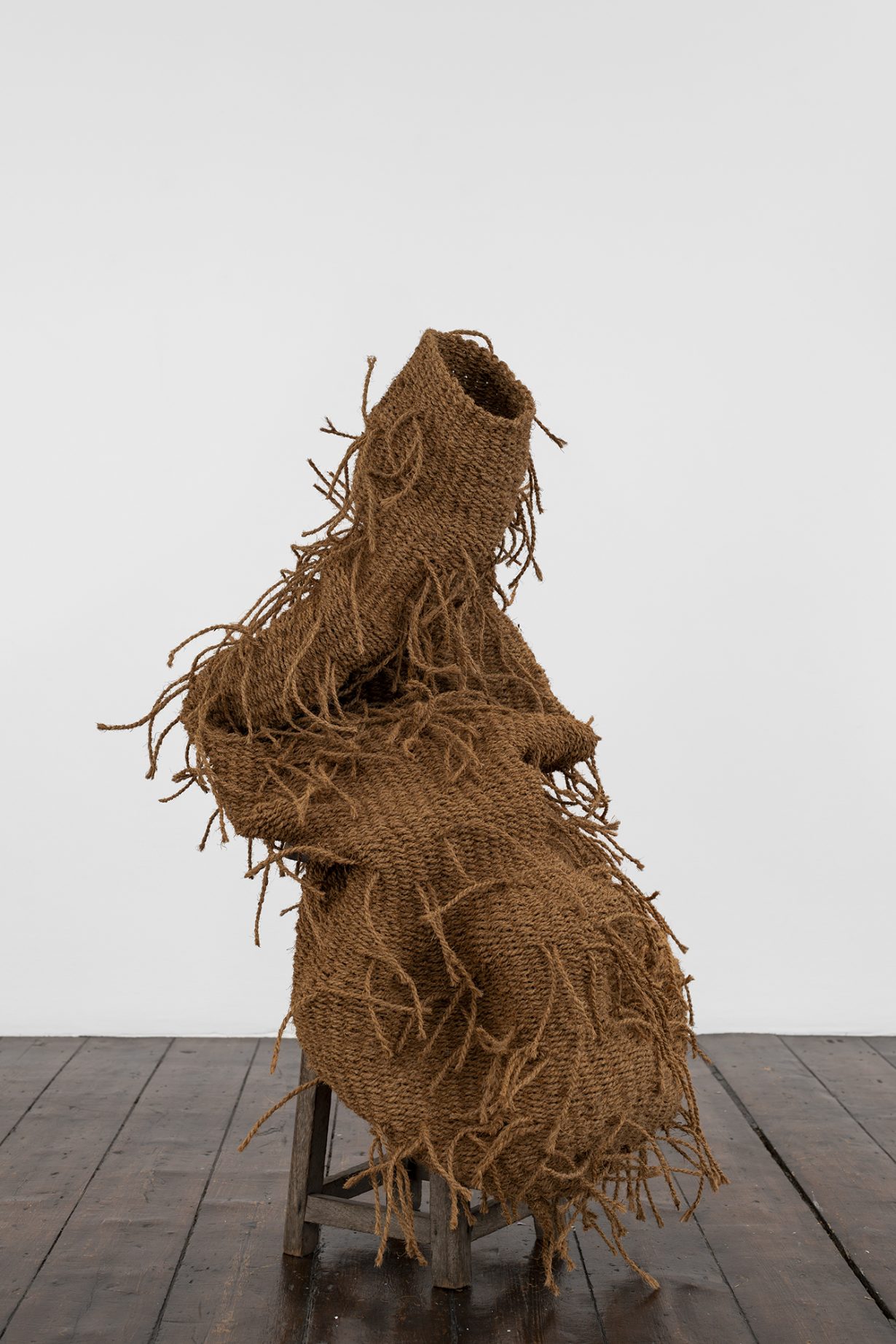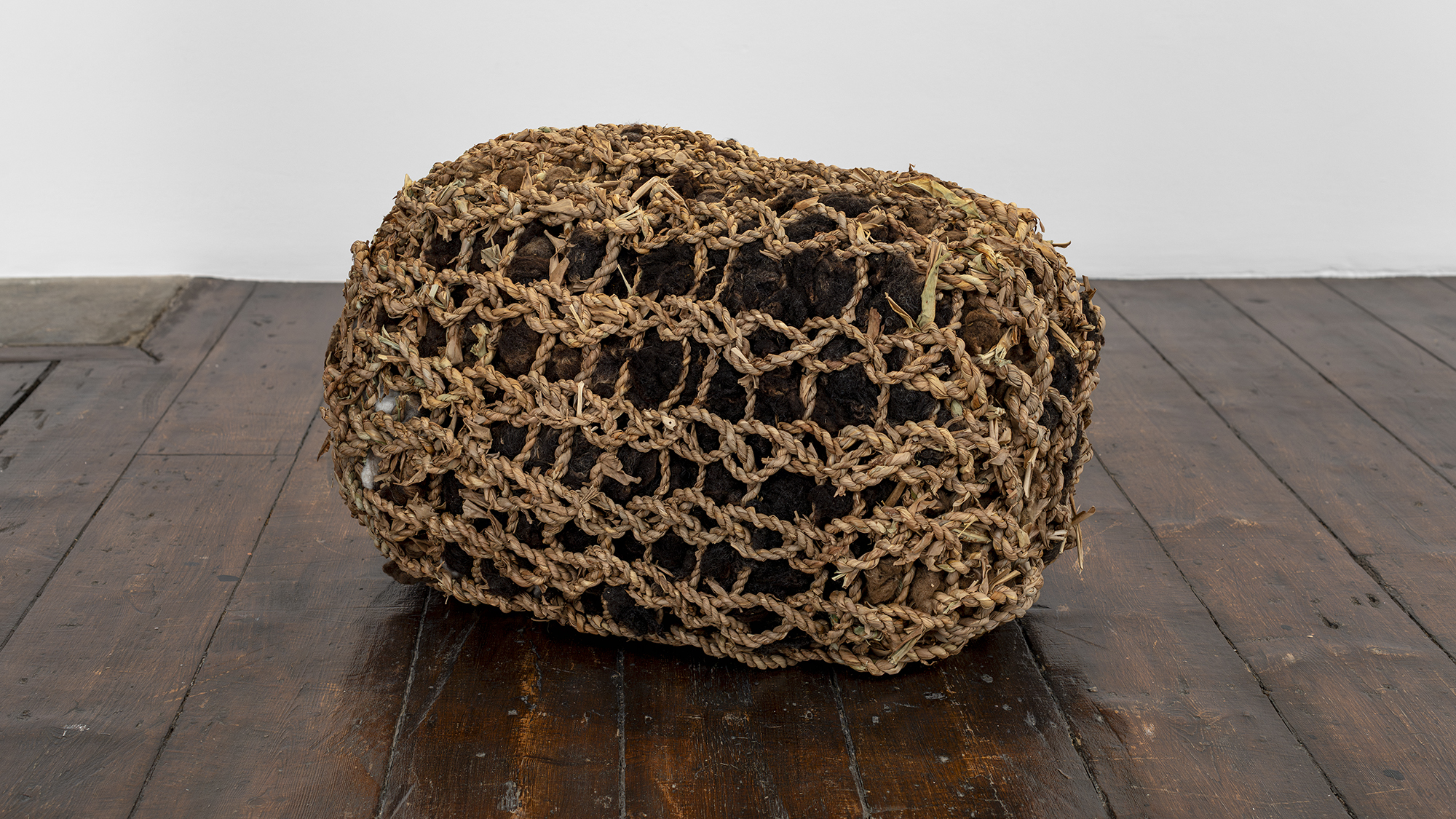The artist meditates on basketry as an ur-technology, and how it might still speak to contemporary life
One of our hunter-gatherer forebears’ earliest innovations, the basket enabled the transportation, storage and measurement of goods, anticipating the modern shipping container in much the same way the crude spears of Upper Palaeolithic warriors anticipated the nuclear bomb. Comprising eight mostly vessellike objects made through a labour-intensive process of handweaving, twining and knotting jute, sisal, rushes and other pliable organic materials, Dan Coopey’s solo exhibition is, in part, a meditation on basketry as an ur-technology, and how it might still speak to contemporary life.
A ropework creel containing a bundle of dark brown sheep’s wool, the floor piece Jacob (2024) is the most straightforwardly functional-looking object in the show. We might easily imagine some medieval shepherd hoisting it over their shoulder and heading off to market, to barter its contents for some of the blue-shelled eggs that nestle together in the oval rush basket of 4 Dozen Minus 1 (2025). More ambiguous is Auricle (2025), a wall-hung form woven from hairy, golden brown palm fibres, whose nested curves and folds recall at once a gigantic human ear, a cross section through the ventricles of a heart and crinkled labia. Such corporeal intimacy, and emphasis on the haptic qualities of the artist’s chosen materials, is echoed in a neighbouring sisal work, Pierrot (Autumn/Winter 2025) (2024), which resembles both the ruched collar worn by the titular lugubrious clown figure of commedia dell’arte, and a puckered anus. And yet any throb of sexual desire these sculptures might prompt is skilfully complicated by their desiccated textures and dusty, vegetal smell. Like cut flowers drying at a graveside, they have a distinct whiff of death.

If some of Coopey’s works invite (visual) penetration, others resist it. Leaning against a wall in the manner of a John McCracken plank piece, or an Amazon delivery left in a shared hallway, Parcel (2024) is a shallow cuboid mass wrapped in loose-weave, sackclothlike fabric, and secured with neurotically tied lengths of string. What might the package contain? Contemplating this question – and the show’s title, Satellites – I began to think about the similarly shaped monolith from Stanley Kubrick’s 2001: A Space Odyssey (1968), which the film posits as a kind of evolutionary catalyst, guiding our species’ transformation from pre- to posthuman, from toolmaking apes to the programmers of sentient computer technology, and our subsequent rebirth as ‘star children’, at one with the universe.
We’re not there yet. The best work in the exhibition – and the most obviously (tragi-) comic – is Beer Belly (2024), a vaguely humanoid hop-twine figure-cum-vessel who slumps on a wooden stool like a chubby boozer after one pint too many. Hops, of course, are a key ingredient in most ales, and given this we might wonder whether poor old Beer Belly is predisposed, by its very nature, to exist in a state of permanent, self-destructive drunken stupor. Relatedly, it’s perhaps worth asking if Homo sapiens’s invention of the humble basket was always fated to give rise, millennia later, to our present, planet-destroying culture of material excess. Looking at his smart, beguilingly beautiful show, I suspect that for Coopey, a container – however elegantly fashioned – is always a form of trap.
Satellites at Corvi-Mora, London, 7 March – 17 April
From the May 2025 issue of ArtReview – get your copy.
